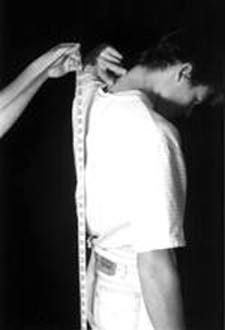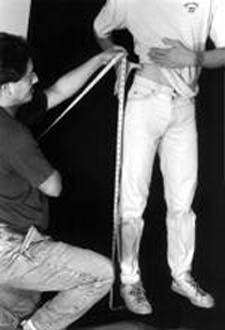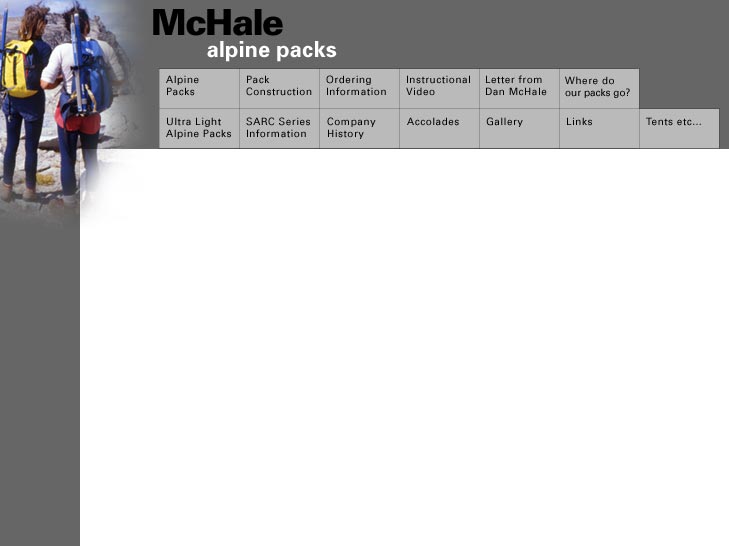|
Did you know that a woman 5'4" tall can have a spine as long as a 6' man, and that it's relatively common? The woman in this case has what is called a long torso while the man has a short torso. We see it every day in our Seattle store. People are breaking the rules again! The biggest mistake we see people making is assuming women have shorter backs than they really do. Women have high waists but not always high hips. In general, women have longer backs in proportion to their height than men. Tall men (over6'5") have a problem because not too many companys besides us really make effective packs for them. To determine which type of back you have for your height, we have developed our own reliable measuring method using two major body landmarks. The first landmark to locate is the 7th cervical vertebra. Drop your head head forward to find it at he base of your neck. It is the major bump at the junction of your forward leaning neck and the vertical spine below. We do not use the method of measuring from the illiac to the 7th cervical because the margin for error in coming forward to the illiac is too great. With our method the height to the illiac is more constant. 
 This model is pointing out the sixth and seventh cervical vertebra. When you run your hand down your neck, you will first encounter #6. Measure #7 with the head erect. This point, in general, is level with the top of the trapezius muscles (where the shoulder muscles intersect the neck). One important factor to mention is whether your shoulders are horizontally shaped or sloping. If they slope off a lot an 18" torso can effectively be a 17". Let us know that if you do not supply photos. The other landmark is the iliac crest. This is the highest point on the pelvis that is midway between the front and rear of the pelvis (see photo). Our measuring method incorporates two measurements. One measures from the floor to a point level with the 7th cervical vertebra or the top of the trapezius muscles. The other measures from the floor to a point level with the iliac crest. We are interested in the difference between the two numbers. It does not matter if you are barefoot or with shoes. The man and woman mentioned above both had a difference of 17". 17" is short for a man of 6' while it is long for a 5'4" woman. We rarely see a difference greater than 20", 18"-19" is common for taller men 6' or over. Women don't generally go below 14.5". In general, as the mean height gets taller the legs get longer - torsos tend to stay constant in proportion to legs the taller people get. In our shop, our tapes are taped to a length of flat metal so that one end can be held down by the foot. This frees the person doing the measuring to more accurately eyeball the points level with the landmarks. Measuring for the Hip Belt To measure your hips for the hip belt circumference, use a tape measure and measure the area 1" below the iliac crest. This keeps the tape from popping up into the smaller waist area - especially for women. You will find that this is also about 1" above the front protruding hip bone (iliac spine). Pull the the tape about 1/2" snug if you are lean, and 1" to 2" if you are overweight. Also, let us know if you are planning on losing weight. If the first belt you get isn't perfect, don't worry. Sometimes it takes two belts to really nail it. We build the belts to 1/2" increments of length in five different heights. |
||

